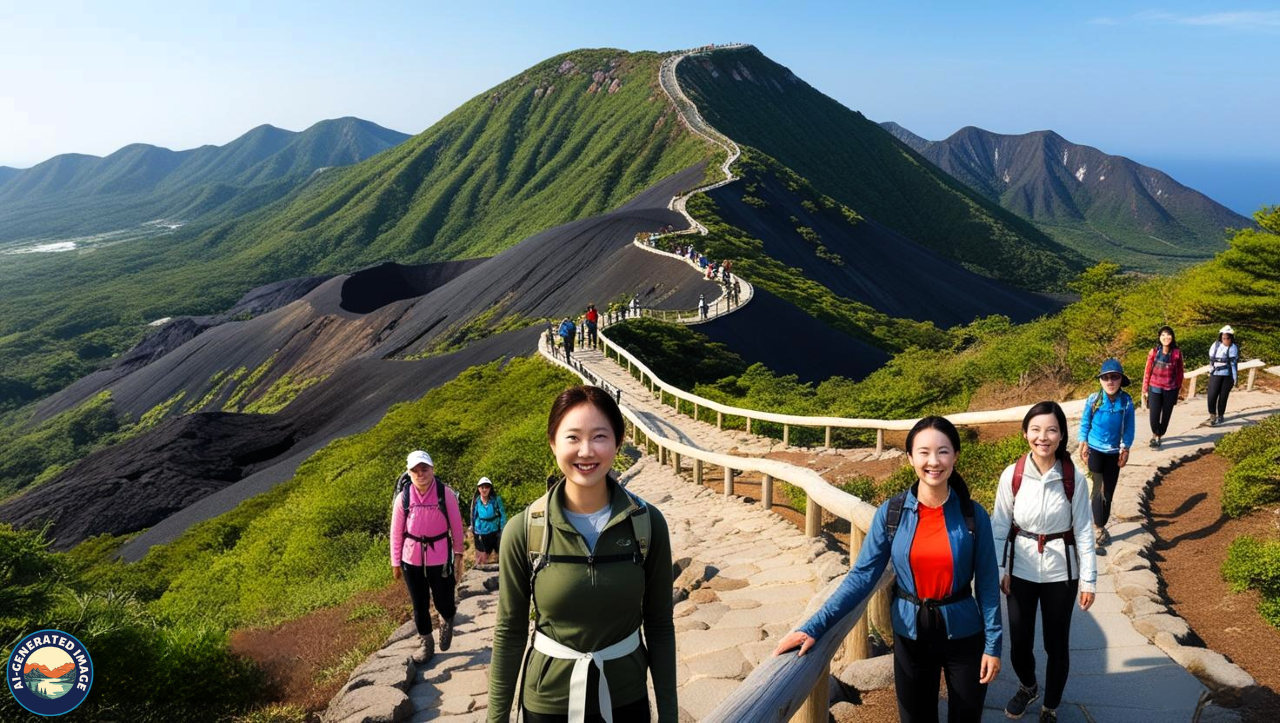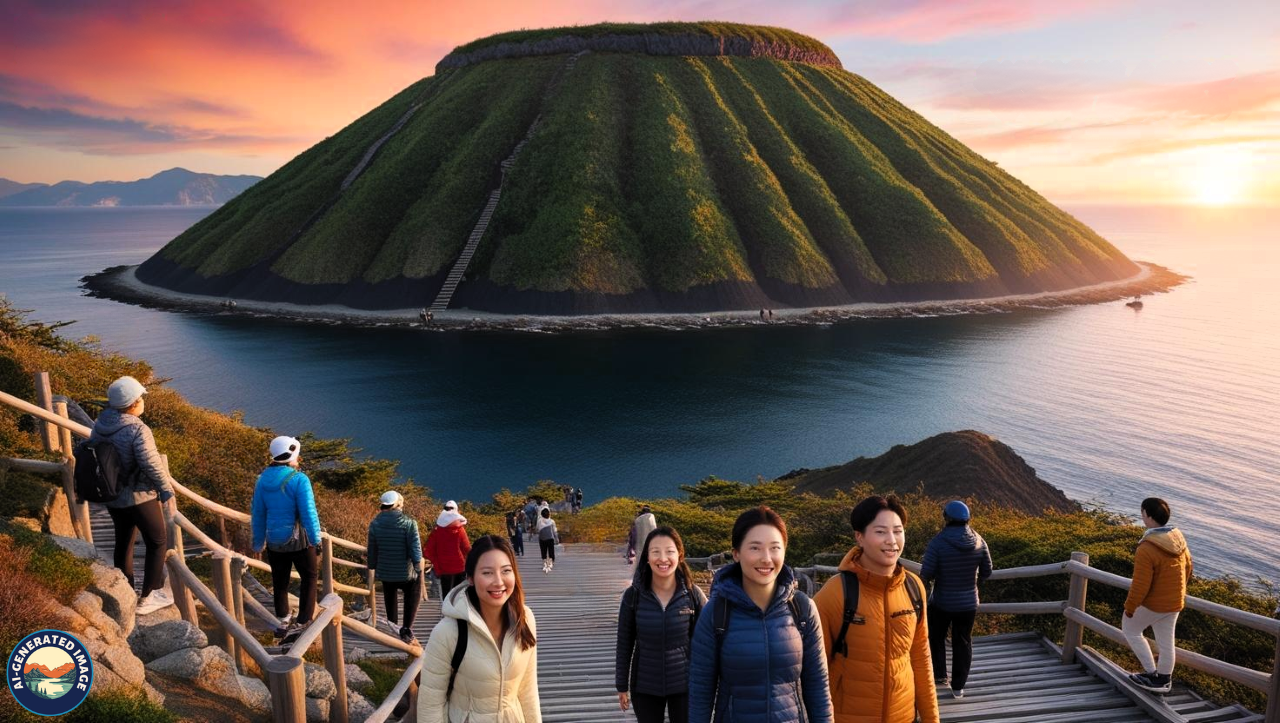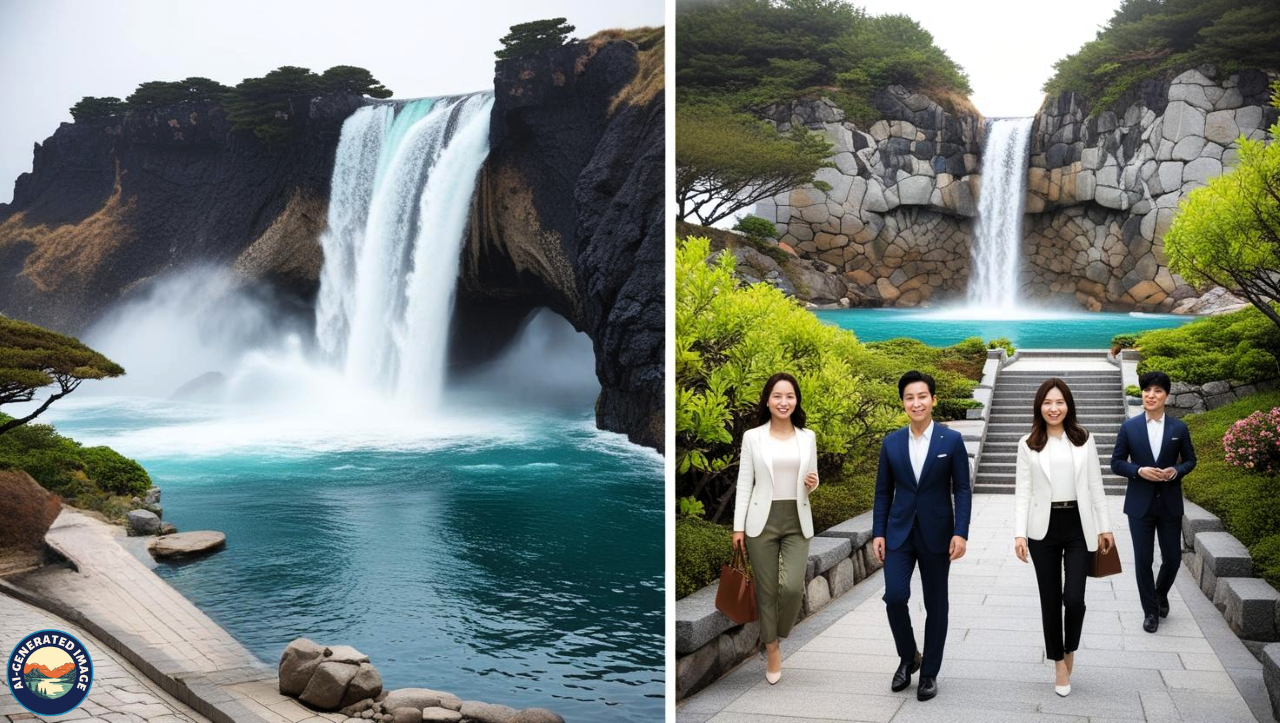Introduction
Off the southern coast of the Korean Peninsula lies a natural paradise known as Jeju Island—a stunning destination celebrated for its scenic beauty, unique volcanic landscapes, and rich cultural charm. Often referred to as the “Hawaii of South Korea,” Jeju is where ancient traditions blend with lush forests, dramatic coastlines, and a relaxed island lifestyle.
Whether you’re a solo traveler, a couple searching for a romantic retreat, or an adventurous explorer, Jeju offers something unforgettable for everyone. In this guide, you’ll discover why Jeju deserves a top spot on your travel list—from its iconic landmarks and local cuisine to practical travel tips and immersive cultural experiences.
Understanding Jeju’s Landscape and Weather
Jeju Island, the largest island in South Korea, was formed through several volcanic eruptions millions of years ago. Its defining features include Hallasan Mountain, which towers at the center of the island, and a surrounding terrain dotted with smaller volcanic cones called oreums. Black basalt rock formations, fertile plains, and a vast network of lava tubes complete its geological wonders.
Weather Highlights:
-
Spring (Mar–May):
-
A bloom of canola flowers and cherry blossoms
-
Summer (Jun–Aug):
-
Warm, perfect for beach activities
-
Autumn (Sep–Nov):
-
Crisp air and colorful foliage
-
Winter (Dec–Feb):
-
Cool weather, with snowcapped peaks on Hallasan
Jeju’s subtropical climate makes it a year-round destination, though spring and autumn are especially scenic.
Unmissable Attractions on Jeju Island
Hallasan National Park
At the heart of Jeju stands Hallasan, South Korea’s tallest mountain. Its summit offers panoramic views, and it’s surrounded by protected wilderness rich with rare plant species.

Popular Trails:
-
Seongpanak Trail:
-
Easier incline, ideal for casual hikers
-
Gwaneumsa Trail:
-
More challenging but offers breathtaking views
Whether you reach the summit or enjoy a gentle hike along its slopes, Hallasan provides an unforgettable nature experience.
Seongsan Ilchulbong – The Sunrise Peak
This dramatic tuff cone, shaped like a crown, was formed by undersea volcanic eruptions. A hike to the top of Seongsan Ilchulbong rewards early risers with a spectacular sunrise and panoramic views of the sea and surrounding villages.

Manjanggul Lava Tube
One of the longest lava tunnels in the world, Manjanggul Cave showcases Jeju’s volcanic origins. Visitors can explore about one kilometer of its caverns, which feature surreal rock formations, lava stalactites, and the world’s tallest lava column.

Waterfalls: Jeongbang & Cheonjiyeon
-
Jeongbang Waterfall is the only waterfall in Asia that falls directly into the ocean.
-
Cheonjiyeon Waterfall is nestled in a serene forest and accessed via a scenic trail.

Both provide postcard-perfect views and peaceful spots to relax.
Jeju Folk Village
Step back in time at the Jeju Folk Village, where over 100 traditional houses recreate life during the Joseon Dynasty. Artisan workshops, cultural performances, and folklore exhibits bring the island’s history to life.

Loveland – A Playful Artistic Escape
An adults-only attraction, Loveland is an outdoor sculpture park that humorously explores sensuality through bold, creative art. It’s quirky, fun, and different from Jeju’s more serene sites.
Jeju’s Natural Charms and Outdoor Activities
Volcanic Craters & Hidden Trails
Jeju’s landscape features extinct volcanic cones known as oreums, which are ideal for light hikes and scenic photography. Notable examples include:
-
Darangshi Oreum:
-
Offers panoramic countryside views
-
Geomun Oreum:
-
Known for dense forests and lava tube networks
Stunning Beaches
-
Hyeopjae Beach:
-
White sand and calm waters—great for families
-
Hamdeok Beach:
-
Known for its turquoise waters and beachside cafés
-
Jungmun Beach:
-
Ideal for surfing and dramatic coastal views
Each beach offers its charm, making Jeju perfect for beach lovers.
Adventure & Water Activities
For thrill-seekers, Jeju offers:
-
Kayaking in sea caves
-
Snorkeling around Udo Island
-
Jet skiing and scuba diving
-
Paragliding and ziplining
Jeju Olle Trails
The Olle Trail System includes over 400 kilometers of scenic walking paths that circle the island’s coastline. These trails range in difficulty and offer diverse views—cliffs, beaches, forests, and fishing villages.
Dive into Jeju’s Culture and Spirituality
Haenyeo – Women of the Sea
Jeju is home to the haenyeo, elderly women who dive without oxygen tanks to harvest shellfish and seaweed. Recognized by UNESCO, their lifestyle symbolizes resilience and matriarchal strength.
You can watch their dives or visit the Haenyeo Museum to learn about their cultural significance.
Dol Hareubang – Stone Guardians
Found throughout the island, Dol Hareubang (stone grandfathers) are carved basalt statues believed to offer protection and good fortune. They are often placed at village entrances and sacred sites.
Buddhist Temples
Jeju’s temples offer tranquility and cultural insight:
-
Yakcheonsa Temple:
-
Known for its grand architecture and peaceful atmosphere
-
Gwaneumsa Temple:
-
A serene site near Hallasan, ideal for meditation and nature lovers
Jeju’s Culinary Delights
Jeju’s food reflects its volcanic soil and ocean bounty. Don’t miss these local favorites:
-
Black Pork BBQ:
-
Smoky, tender pork unique to Jeju
-
Abalone Dishes:
-
Served grilled, in porridge, or in stews
-
Hairtail Fish Stew:
-
A spicy, savory specialty
-
Sea Urchin Soup:
-
Rich in umami and often served with rice
Where to Eat:
-
Dongmun Market (Jeju City):
-
Great for fresh seafood and local snacks
-
Seogwipo Maeil Market:
-
Bustling with vendors offering traditional dishes and souvenirs
Street food like tangerine juice, sweet pancakes (hotteok), and grilled seafood skewers are must-try treats.
Where to Stay on Jeju Island
Budget Stays
-
Guesthouses and hostels in Jeju City
-
Family-run pensions near the beaches
Mid-Range
-
Boutique hotels in Seogwipo with ocean views
-
Comfortable modern accommodations near tourist sites
Luxury Resorts
-
Upscale resorts in Jungmun with spas, pools, and oceanfront views
Best Areas:
-
Jeju City:
-
Offers transportation access and nightlife
-
Seogwipo:
-
Close to nature and local markets
-
Aewol:
-
Trendy cafés, ocean views, and stunning sunsets
How to Reach and Travel Around Jeju
Getting There
-
By Plane:
-
Flights from Seoul, Busan, and nearby countries take about one hour
-
By Ferry:
-
Scenic routes are available from Mokpo and Wando, though slower
Getting Around
-
Car Rental:
-
The most convenient way to explore the island independently
-
Public Buses:
-
Affordable but time-consuming for long distances
-
Taxis:
-
Readily available but expensive for extended travel
-
Scooters:
-
A fun option for solo travelers with an international license
Tip: Use KakaoMap or Naver Map for accurate local navigation.
Smart Travel Tips for Jeju
-
Language:
-
English is common in tourist areas; use translation apps elsewhere
-
Currency:
-
Korean Won (₩); credit cards are widely accepted
-
Internet Access:
-
Rent a pocket Wi-Fi or buy a local SIM card
-
Packing:
-
Bring comfortable walking shoes, sunblock, and a light jacket
-
Etiquette:
-
Respect temple customs, bow when greeting, and dispose of waste properly
Conclusion
Jeju Island is more than just a beautiful destination—it’s a place of natural wonders, deep-rooted culture, and unforgettable experiences. From hiking Hallasan and wandering lava tubes to savoring fresh seafood and admiring ocean views, Jeju offers a unique blend of adventure and tranquility.
It’s the perfect getaway for nature lovers, culture enthusiasts, and those simply looking to unwind. Whether you explore for a few days or an entire week, Jeju’s charm is sure to leave a lasting impression.
FAQs
Is Jeju Island visa-free?
Yes, many nationalities can enter Jeju without a visa, even if they require one for mainland Korea. Be sure to check updated visa policies.
Is Jeju suitable for families?
Absolutely! Jeju has family-friendly beaches, parks, museums, and nature trails.
How long should I spend in Jeju?
Three to five days is ideal to cover major sights and enjoy a relaxed pace.
When is the best time to visit?
Spring and fall are the most pleasant, offering mild weather and beautiful scenery.
Can I travel without knowing Korean?
Yes, most tourist areas have English signage. A translation app can help in rural areas.

